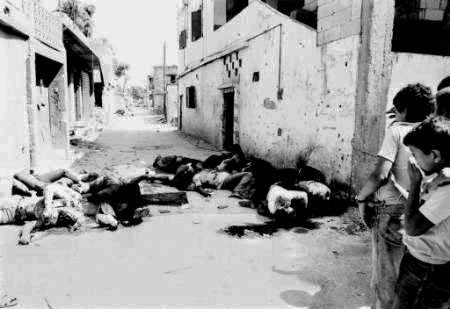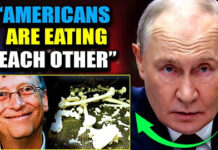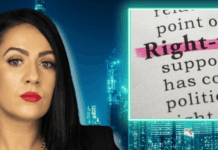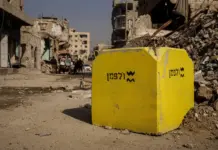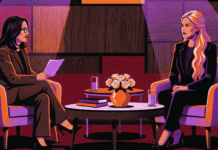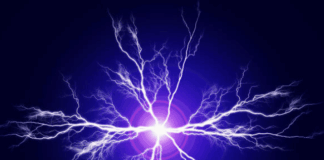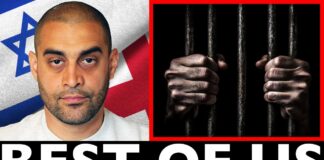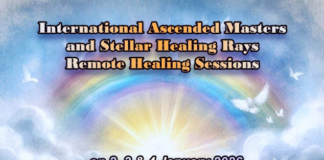Last week was the 40th anniversary of the appalling massacre at Sabra and Shatila refugee camps in Lebanon. Dr. Swee Ang was there, in the thick of it, doing what she could for the victims.
Malaysian-born Swee is the first female Orthopaedic Consultant appointed to St Bartholomew (‘Barts’) and the Royal London Hospitals.
I wrote about this remarkable lady 4 years ago when she reported on apartheid Israel’s violent hijacking in international waters of the Norwegian mercy boat Al-Awda sailing to Gaza with urgent medical supplies. She was onboard. Passengers and crew were roughed up (some seriously injured) and abused, thrown in an Israeli jail, and had their possessions and money stolen.
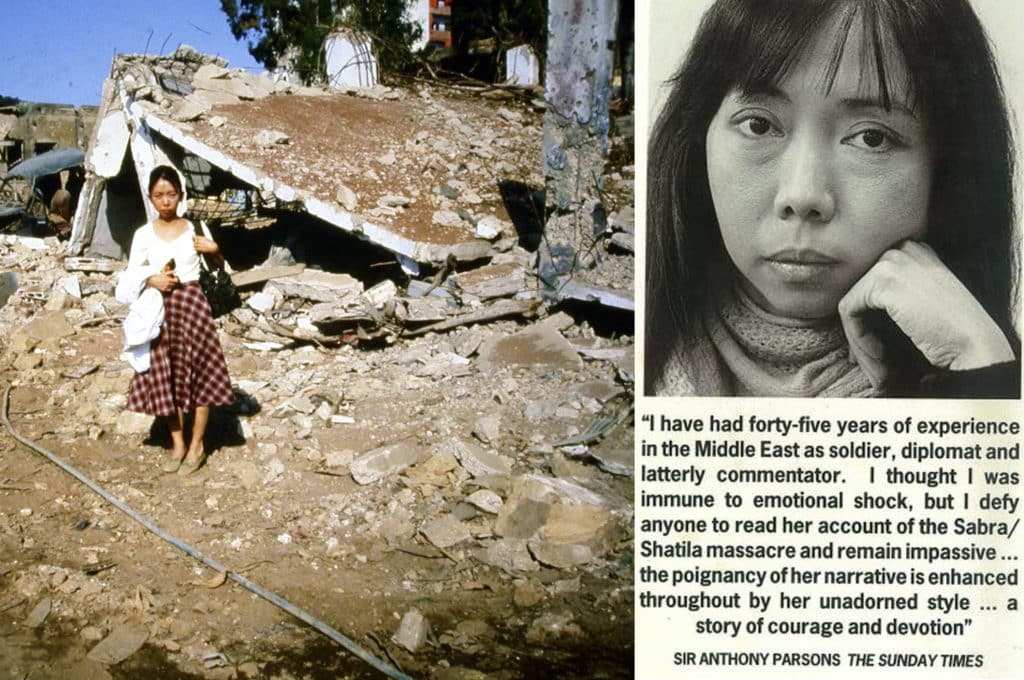
In the 1980s and 1990s she worked as a trauma and orthopedics consultant in the refugee camps of Lebanon and later for the United Nations in Gaza, and the World Health Organisation in the West Bank and Gaza. She is the Founder and Patron of the British charity Medical Aid for Palestinians (MAP).
She also treated the victims of the Pakistan (Kashmir) earthquake, and operated on and looked after the victims of the 7 July 2005 London bombing.
Dr. Swee is the co-author of War Surgery and Acute Care of the War Wounded and also wrote From Beirut to Jerusalem documenting her experience in the Palestinian Refugee Camps in Lebanon and Gaza.
This is her account of the terrible 3-day slaughter of Palestinian refugees in 1982.
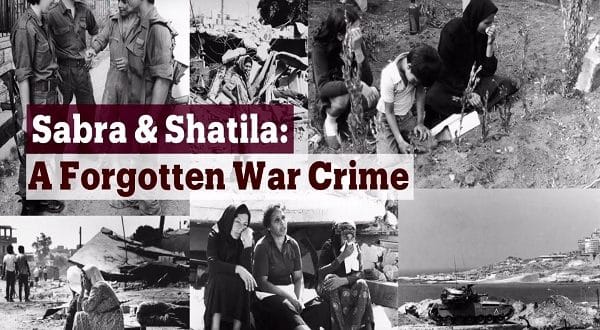
As a medic during the Sabra and Shatila massacre, I saw horror and defiance
by Swee Chai Ang
Horrific Lebanese militia attacks enabled by Israel in 1982 left a legacy of trauma. But there is also a reason for hope.
Forty years ago, angered by television footage of the devastation of Lebanon by Israel’s 1982 invasion, I left my London home to volunteer my surgical skills to the wounded. The invasion killed thousands of civilians and destroyed homes, livelihoods, hospitals, libraries, factories, schools, and offices.
I arrived that summer in Beirut, a Christian surgeon who supported Israel and believed the Palestine Liberation Organisation (PLO) were terrorists. My views were about to change.
With many hospitals destroyed, I worked as a volunteer medic in a field hospital in an underground car park. We dealt with devastating war wounds, many inflicted on children. Beirut was bombed and blockaded. Water, electricity, food, and medicine were denied.
Thousands of families whose homes were demolished were forced to live on the streets of the city center – thirsty, hungry, destitute, and traumatized.
With hopes again dashed, homes shelled and bulldozed, and loved ones deported and massacred, survivors once more tried to rebuild their shattered lives.
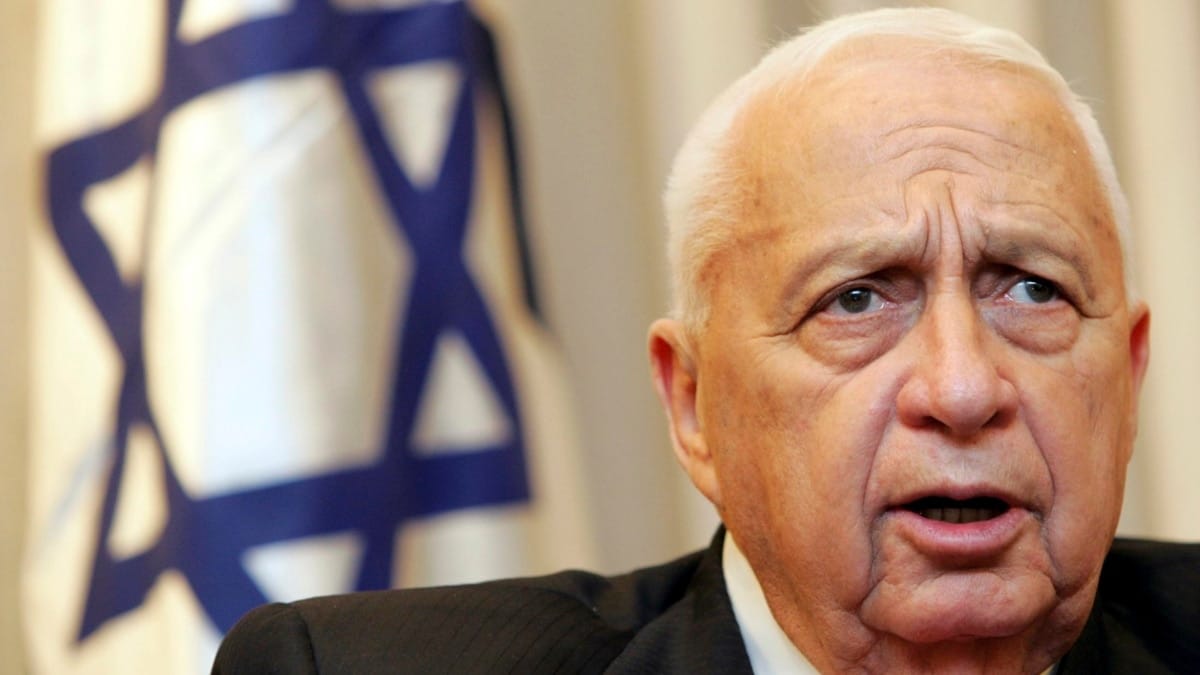
The aggressive and relentless bombing stopped when the PLO agreed to evacuate in exchange for peace. Thousands of PLO members were ordered to leave Lebanon, undertaking never to return, while their families left behind were promised protection under a US-brokered plan.
Following the ceasefire, the Palestine Red Crescent Society (PRCS) needed a six-member surgical team to support the reopening of the 11-floor Gaza hospital on Sabra Street – the only PRCS hospital still standing at the time, after the rest had been flattened by bombs. A group of us packed into a PRCS car, and with sirens blaring, we sped along roads empty of vehicles.
Upon arrival, we saw that the top two floors of the hospital were heavily bombed, but the ninth was largely intact, despite the window glass having been blown out. This became our living quarters. There was still no electricity or running water, but at least the bombs had stopped falling.
The hospital was extremely busy. PRCS staff cleared rubble, and repaired and cleaned hospital wards, operating theatres, the pharmacy, the canteen, and the mortuary. Wounded patients were transferred from various field hospitals to us for further care.
From the top floors of Gaza Hospital, the entire length of Sabra Street was visible, I watched displaced families of women, old men, and children – since the able-bodied men had been evacuated – returning to their homes walking the entire length of that street with their scant belongings on their backs, carts, and donkeys. They were determined to pick up their shattered lives, clear out the rubble, and rebuild their homes. The US-sponsored peace gave them hope. Their courage and will to survive won me over.
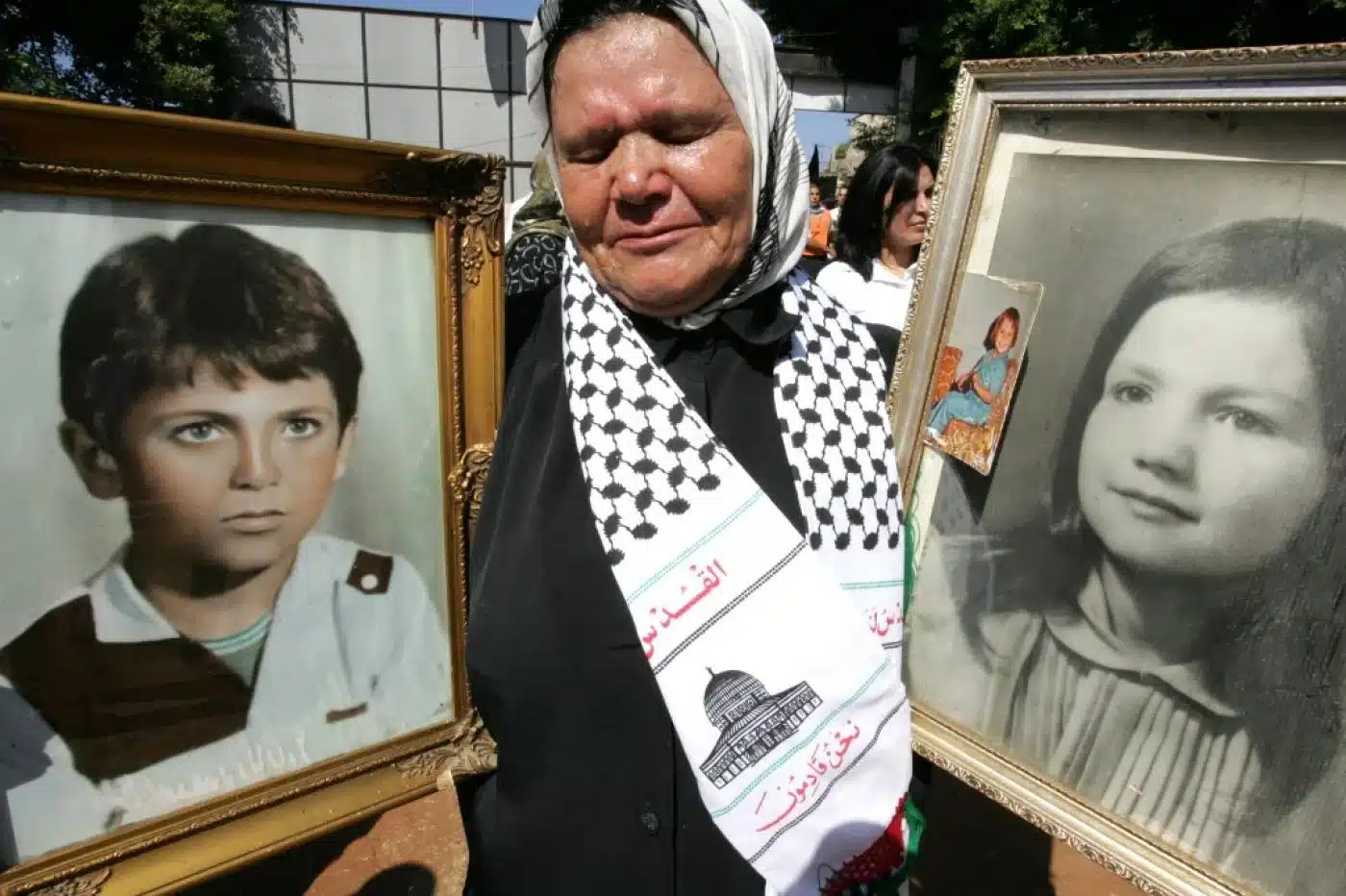
What is the Sabra and Shatila massacre?
I made friends with many residents of this area and was outraged to learn the history of Palestine from them. Their families were forced out of Palestine at gunpoint in 1948 to facilitate the creation of the state of Israel.
Around half of the country’s indigenous population or 750,000 people, were driven out to become refugees in neighboring Jordan, Syria, and Lebanon. Around 13,000 Palestinians were massacred and 530 villages destroyed in this massive ethnic cleansing known as the Nakba.
In short, Palestine was wiped off the world map. In 1948, Lebanon received about 110,000 fleeing refugees who were settled in refugee camps. By 1982, the refugee population had grown to nearly 400,000.
Despite the injustices committed against them, the Palestinians I met were kind and generous. They had suffered so much and yet retained such humanity. I was overwhelmed by their hospitality in the midst of their poverty. Their story was not in any history textbook, but every Palestinian child knew the name of their ancestral village, many of which had already been demolished.
The women introduced me to their stunningly beautiful Palestinian embroidery, with motifs representing their destroyed villages sewn onto black cloth with brilliantly colored silk threads. Each stitch was a testimony to their history, culture, and resilience.

Raped and tortured
Three weeks after the evacuation, on 15 September 1982, the ceasefire was suddenly broken when hundreds of Israeli tanks invaded Beirut. Some of these tanks sealed all the escape routes of Sabra Shatila, and Lebanese Phalangist militia members were sent into Sabra and Shatila camps and massacred up to 3,500 Palestinians and Lebanese civilians, as the Israeli army stood by. Multinational peacekeepers were nowhere to be found.
Residents of the camp were betrayed, left with no one to defend them. Many were raped and tortured before being killed during the three-day massacre.
At the hospital, we operated non-stop, struggling to save hundreds of people shot at close range. Some died upon reaching us and were taken directly to the mortuary. The hospital ran out of blood, medicine, and food. Thousands of frightened people fled into our hospital seeking protection from gunmen who had broken into their homes.
In the midst of the massacre, on the evening of 17 September, our hospital director sent PRCS staff away when it became clear that the gunmen would target them. But our 22-member team of international medical volunteers opted to stay. Anyone hiding in our hospital was asked to leave, as they were also likely to be gunned down. But the critically wounded on life-support could not leave.
Early at dawn the next day, we were forced out of the hospital at gunpoint, leaving behind 30 critically wounded patients, many of them children. A Swedish nurse and a German medical student insisted on staying behind to look after them, and I believe their selfless act of courage saved those patients’ lives.
We were marched along Sabra Street. Hundreds of unarmed camp residents – women, old men, and children – were rounded up by the militia. I saw the terror in their eyes. A desperate young mother passed me her baby, but at gunpoint, she was forced to take him back. Both were killed, together with the others rounded up, after we were taken away.
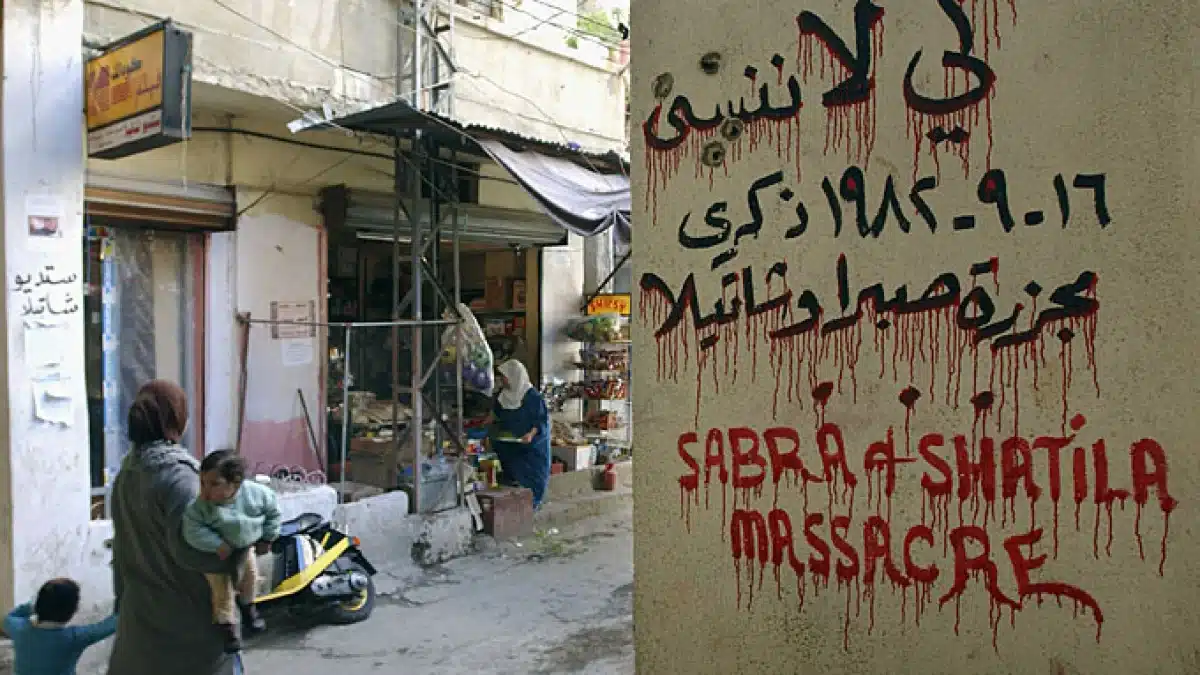
Short-lived outrage
When photographs of heaps of dead bodies in the camp alleys were published after the massacre, there was worldwide outrage and condemnation. But international attention was short-lived. The victims’ families and survivors were soon left alone to plod on with their lives and relive memories of the massacre, the horrors of the invasion, and of the painful dismantling of their families through the forced PLO deportations.
With hopes again dashed, homes shelled and bulldozed, and loved ones deported and massacred, survivors once more tried to rebuild their shattered lives, raising their children while burying the dead in mass graves. The world moved on, and they were forgotten – dead to the consciousness of the international community.
Among the children who made it, many homeless and orphaned, the spirit of defiance was very much alive.
Since then, the downward spiral of hopelessness and despair for Palestinians, made worse by poverty and the sense of being abandoned, has only worsened. Their plight cannot seem to excite the headlines of mainstream media anymore.
Generations have lived and died in the refugee camps scattered across Jordan, Lebanon, Syria, and further afield. Children have been born refugees, grown-up refugees, and died refugees.
But my hope for the Palestinian people was planted in the immediate aftermath of the massacre 40 years ago. I returned to Sabra-Shatila immediately after the area reopened. There were mass graves, decaying bodies, broken homes, and grieving relatives. There were despair, desolation, piercing screams, and a vale of tears. I was heartbroken.
 Yet, it was not over. Among the children who made it, many homeless and orphaned, the spirit of defiance was very much alive. As they lined up for me to take their photographs, they raised their hands in the victory sign, saying: “We are not afraid. Let the Israelis come.”
Yet, it was not over. Among the children who made it, many homeless and orphaned, the spirit of defiance was very much alive. As they lined up for me to take their photographs, they raised their hands in the victory sign, saying: “We are not afraid. Let the Israelis come.”
The air was thick with the stench of decaying human flesh. In the foreground were bodies waiting to be identified; behind them were their destroyed homes. But between death and destruction were the destitute Palestinian children defiantly staking their right to be part of humanity.

Dr. Swee’s book From Beirut to Jerusalem gives more details of this horrendous crime against humanity. Somebody ought to make a film about her amazing life and dedication.
©Stuart Littlewood, 20 September 2022
Disclaimer: We at Prepare for Change (PFC) bring you information that is not offered by the mainstream news, and therefore may seem controversial. The opinions, views, statements, and/or information we present are not necessarily promoted, endorsed, espoused, or agreed to by Prepare for Change, its leadership Council, members, those who work with PFC, or those who read its content. However, they are hopefully provocative. Please use discernment! Use logical thinking, your own intuition and your own connection with Source, Spirit and Natural Laws to help you determine what is true and what is not. By sharing information and seeding dialogue, it is our goal to raise consciousness and awareness of higher truths to free us from enslavement of the matrix in this material realm.
 EN
EN FR
FR

